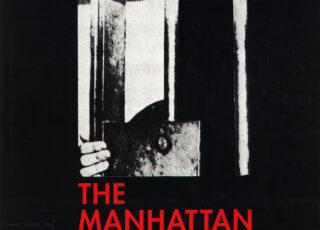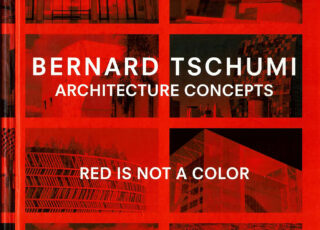Hugo, Notre Dame de Paris
Victor Hugo began writing Notre-Dame de Paris in 1829, largely to make his contemporaries more aware of the value of the Gothic architecture, ...
Continue Reading →Leland, Hearne, The Itinerary of John Leland the Antiquary
The third edition of the important ‘itineraries’ of the poet and antiquary John Leland (c.1503-1552), who made a number of trips around England ...
Continue Reading →Knight, An Inquiry into the Symbolical Language of Ancient Art and Mythology
This influential work of 1818 by dilettante and critic Richard Payne Knight (1751-1824) has stood the test of time. The study investigates the ...
Continue Reading →- _English Language
- Architecture and Literature, Symbolism
- Art Theory
- Drawings
- Enlightenment Library
- Sources
Spence, Polymetis or an Enquiry concerning the Agreement Between the Works of the Roman Poets and the Remains of the Antient Artists
The first edition had been published in 1747 (after lengthy preparation – Spence had assembled preparatory material during his first visit to Italy). ...
Continue Reading →Pauwels, L’Architecture au temps de la Pleiade
En 1549, Henri II faisait à Paris une ” triomphale entrée “. Cette consécration du nouveau pouvoir était en même temps celle d’une ...
Continue Reading →Whitehead, Castles of the Mind
For well over a thousand years, scholars exploited the potential of architecture for allegorical representation. Regardless of whether they were describing the characteristics ...
Continue Reading →Beauty, Poems From the Plenty
What if we think of beauty as an index to a cloud that talks about beauty. In a library beauty is not fixed, ...
Continue Reading →Maguire, Art and Eloquence in Byzantium
In this interdisciplinary study, Henry Maguire examines the impact of several literary genres and rhetorical techniques on the visual arts of Byzantium. In ...
Continue Reading →Reitz, Building in Words
‘Building in Words’ deals with the process of construction in Roman imperial literature from Vergil to the second century AD. The first part ...
Continue Reading →Eriksen, The Building in the Text
In The Building in the Text, Roy Eriksen shows that Renaissance writers conceived of their texts in accordance with architectural principles. His approach ...
Continue Reading →Most liked books

Tschumi, The Manhattan Transcripts
May 23, 2025
Tschumi, Red is not a Color
May 23, 2025Recent Comments
Categories
- _English Language 1454
- _French Language 55
- _German Language 69
- _Italian Language 54
- _Latin Language 45
- 1750-1850 64
- 17th Century 77
- 17th culture and other cities in Italy 5
- 19th century 45
- 20th Century 151
- 21th Century 75
- Aesthetics 5
- Afrofuturism 3
- Ancient Literature 37
- Anthropocene 1
- Anthropology 3
- Architectural Theory 228
- Architecture + Philosophy 37
- Architecture and Literature, Symbolism 36
- Art 13
- Art Theory 110
- Artificial Intelligence 11
- Artists in Rome 20
- Astronomy 2
- Autobiography 1
- Bernini 19
- Biology 5
- Catalogue 2
- Christian Iconography 18
- Christianity 13
- Cinema 2
- City 45
- Classical 1
- Construction 1
- Contemporary 2
- Design 29
- Digital Architectonics 26
- Drawings 41
- Economy 31
- Empire, Architecture + Catholicism 14
- England & British Isles 26
- Enlightenment Library 127
- Evolution 6
- Fashion 6
- Feminism 20
- Film Festival 1
- France 47
- Gender and Sexuality Studies 5
- Gothic 13
- Greek, Roman Library 99
- Historiography 43
- Humanism 12
- India 5
- Islam 5
- Italy 80
- Landscape Architecture 8
- LGBT 1
- Libraries 0
- Linguistics 6
- Literary Criticism 11
- Literary Theory 82
- Literature 95
- Low Countries (Benelux) 14
- Mathematics 61
- Medicine 4
- medieval library 38
- medieval literature 12
- Modern 51
- Monuments + Conservation 27
- Music Theory 1
- Mysticism 4
- Mythology 19
- Nature, Ecology, Animals 4
- Neurobiology 1
- Opera 5
- Philosophy 346
- Physics 16
- Poetry 6
- Politics 76
- Popes, Vatican, Rome 27
- Portrait, Sculpture, Materiality 56
- Post-Modern 22
- Programming 2
- Psychology 22
- Religion 23
- Renaissance 86
- Renaissance Library 80
- Rhetorics 1
- Roman Architecture 21
- Rome 122
- Schinkel 8
- Science 57
- Sociology 21
- Sound 7
- Sources 56
- Spain 10
- Switzerland 48
- Uncategorized 73
- Urbanism 53
